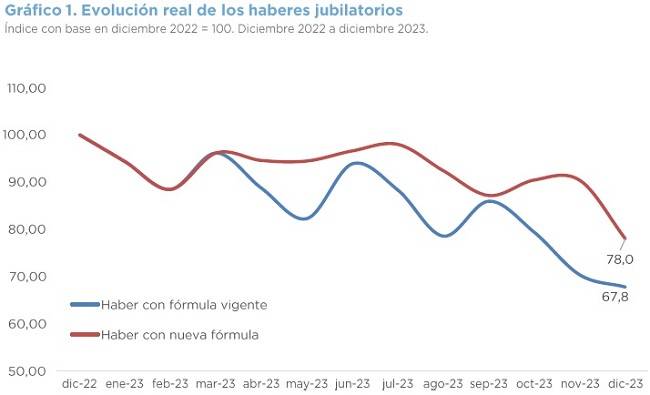The change proposed by the National Executive Branch implies adjusting the pension benefits by the current formula in the first quarter of the year and by the Consumer Price Index (CPI) as from April.
- Applied to the year 2023, the formula currently in force results to be less beneficial.
- The current formula resulted in a 32.2% deterioration of the purchasing power of pensions whereas the formula proposed by the Executive Branch would have reduced this loss to 22% YoY.
- This calculation does not include bonuses but only the automatic application of the adjustment mechanisms.
- If inflation were to decelerate during 2024, pensions would lose in the first quarter but would then tend to recover.
- If no bonuses had been granted, the National Social Security Administration (ANSES) would have recorded a surplus equivalent to 0.2% of GDP last year instead of a deficit of 0.3%. With the proposed formula, the fiscal cost would reach 0.7 p.p. of GDP due to the higher expenditure on pension benefits.

